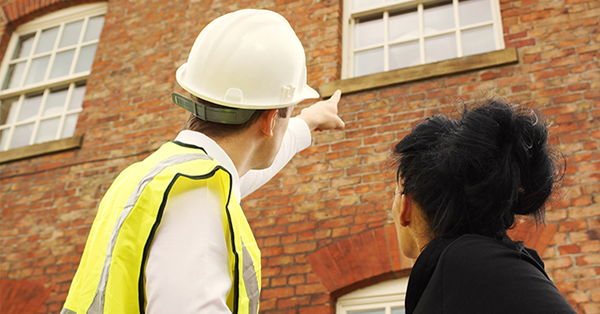What is a Non-Intrusive Survey?
- Home surveys are non-intrusive and very useful, but they are limited. If there are no visible clues, some underlying issues may go undetected.
- When a surveyor inspects a property on behalf of a buyer, it is non-invasive because the seller does not want damage to their property.
- A RICS surveyor is trained to recognise subtle indications of hidden issues. They will recommend if any further investigation is required.
- Choose a surveyor with experience in your neighbourhood as they'll have knowledge of defects common to the area.
Non-intrusive meaning
You’ll note in the terms of your home survey that it is a non-intrusive survey.
A non-intrusive survey covers visible and accessible areas. This type of survey aims to minimise disruption and potential damage to the property during the inspection process while also assessing its condition.
For example, a surveyor may lift a drain cover or enter a loft designed for access. They will not drill into walls, pull up floorboards, or do anything that might cause structural damage; they conduct a thorough visual inspection of the accessible areas.
A RICS-level surveyor is trained to spot any potential problems that are not apparent to the naked eye.

A buyer can still withdraw from a property purchase at any time before the exchange of contracts. If the survey reveals confirmed or suspected defects, the buyer has the right to reconsider.
RICS Surveyors – Local Knowledge – Same Week Availability
Or, call us on 0333 344 3234 (standard call charges apply)
Buyer's interests vs Seller's interests
The buyer wants the most in-depth survey, but the seller doesn't want to have to pay to repair any damage before the buyer has committed to buying it.
The seller will agree if they accept that any person doing their due diligence will want to investigate a suspected issue.
A non-intrusive survey protects the seller
A non-intrusive inspection will not damage the property. If an accident occurs, the surveyor is indemnified, so the seller will be financially compensated.
In cases where a surveyor suspects the existence of a hidden problem, they can recommend a more invasive procedure.
Looking for a cheap building surveyor? Check out our article to find out the risks.
What if you were selling eggs?
Imagine you sell eggs. If you let the buyer break one open to check it for freshness, it's not in sellable condition anymore. You’d naturally expect the buyer to pay. In the conveyancing process, sellers will only allow this to happen if the buyer's surveyor is indemnified against damage.
What is an intrusive survey?
This type of survey is more comprehensive in nature. The seller must consent to this disturbance before the surveyor or another specialist can complete the work.

What does intrusive mean?
Looking beyond the surface. Examples include:
- Lifting carpets or floorboards: to inspect the condition of the subfloor for rot, damp, or structural weaknesses.
- Drilling holes: to check for moisture within walls or to assess the structural integrity of materials.
- Removal of tiles: to reveal the condition of the surface beneath.
- Removal of plaster: to inspect the underlying materials for signs of deterioration or hidden damage.
This kind of survey is carried out after specific defects have already been identified. For instance, if there are visible signs of damp, subsidence, or rot, or where the evidence is strong enough to get a more rigid inspection.

If a surveyor has advised an intrusive survey and you have the homeowner's permission, contact us or call 0333 344 3234 to arrange your intrusive survey.
Andrew started his career in 2000 working within conveyancing solicitor firms and grew hands-on knowledge of a wide variety of conveyancing challenges and solutions. After helping in excess of 50,000 clients in his career, he uses all this experience within his article writing for SAM, mainstream media and his self published book How to Buy a House Without Killing Anyone.
Caragh is an excellent writer and copy editor of books, news articles and editorials. She has written extensively for SAM for a variety of conveyancing, survey, property law and mortgage-related articles.









